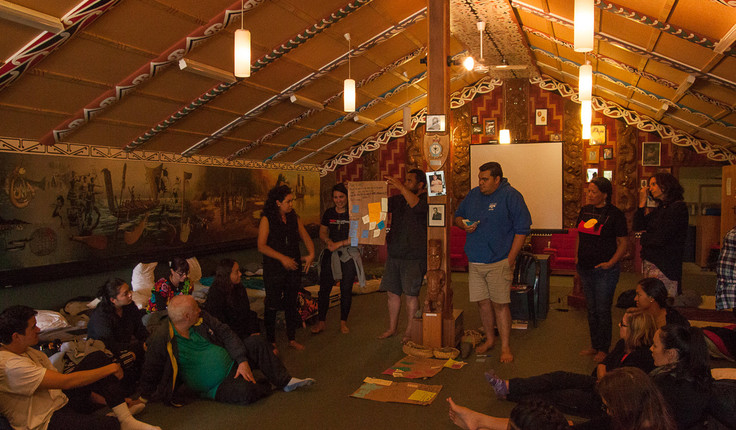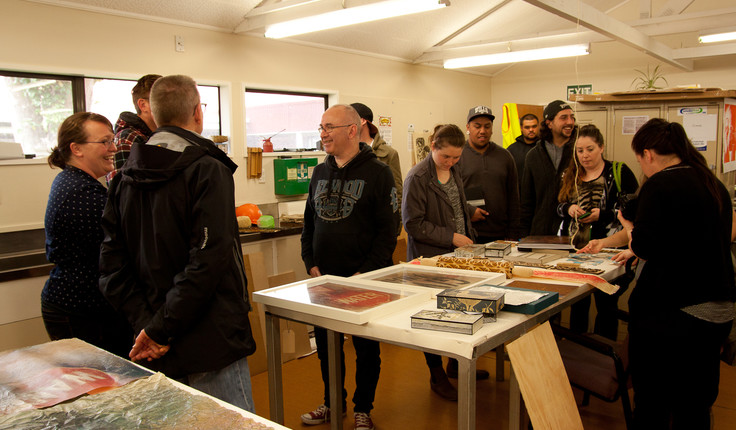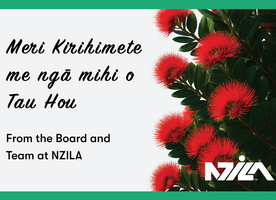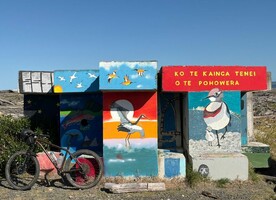News
Nga Aho - "Our faces in our places"
Posted 27 08 2018
in News

“the many strands"
Ngā Aho was a name gifted to a group of Māori design professionals by their kaumatua, Haare Williams. It translates as “the many strands", in this case suggesting the weaving together of the many strands of Māori design culture: strategy, planning, landscape architecture, architecture, visual communications, product design and education.
Ngā Aho Chair, Desna Whaanga-Schollum, says it’s founded largely on the basis of Te Aranga Cultural Landscape Strategy, which precedes Te Aranga Māori Design Principles. Back in 2005 the Ministry for the Environment was consulting on developing the Urban Design Protocol. “At that time it was recognised that there wasn’t a Māori entity that the Government could go to to consult with regarding design of the built environment,” Whaanga-Schollum says. “So the Te Aranga Cultural Landscape Strategy was formed and Ngā Aho as well, although it took a few years before Ngā Aho was finally incorporated.”
The network sits alongside other professional design associations such as the New Zealand Institute of Landscape Architects, the New Zealand Institute of Architects and the Designers Institute of New Zealand. It’s aim is to see “our faces in our places”, supporting members and their communities, and the wider Māori identity aspirations of this country. It’s also a valuable mentoring network for Māori design tertiary students.
Whaanga-Schollum says central to this position is actively maintaining reciprocal relationships with Māori communities and providing responsive and skilled support. “Tono (Invitations) come in from members to host wānanga at their marae,” she says. “We’ll usually stay at a marae for three or four days, and the hau kainga (home people) will give us a brief on the first evening and some historical knowledge of place. It could be that the wharenui needs restoration or that there needs to be a master plan developed for the marae complex, or there’s a water table that’s challenging the position of some buildings. Or it could be that they need stories told through artworks.
“We will workshop on these needs over the weekend from an interdisciplinary perspective, then give the results back to the hau kainga at the end of the wānanga. It’s a very hands on experience, and it gives the students who attend from the tertiary institutes, the opportunity to participate in a grounded, practical design situation with Māori communities, alongside other senior design practitioners.”


“Because we’re volunteer run it can be quite exhausting work, we get a lot of demands. But without fail, at every hui-a-tau I’ve had at least one student, if not a few students, come up to me and express really heartfelt thanks for having the opportunity to participate in that kind of wānanga. The gatherings change their perspective on design, often making them feel more secure about where they are from, and that they have a valid and valuable cultural voice to be employed in their work. It’s extremely affirming to have those times to ‘touch base’, and rejuvenate the wairua (spirit) in our mahi (work).”
Ngā Aho also run various speaker sessions to profile it’s own members but also Māori creatives in connected industries.
As far as encouraging others in the design and planning communities to be sensitive to New Zealand’s history, Whaanga-Schollum says the adoption of Te Aranga Māori Design Principles in Auckland has done “a hell of a lot” to increase the visibility of dialogue around Māori identity. Mana Whenua, Design professionals and Ngā Aho worked with Auckland Council to establish the Te Aranga Principles, making them simple and accessible to give all designers an idea of some simple core Māori values and how they might be able to reflect them in their practices. She believes Auckland Council has “good intent” around nurturing better relationships with mana whenua, and having deeper, more meaningful conversations on how the built environment is being designed.
"There’s a pretty complex landscape when it comes to Tāmaki, as you have between nineteen and twenty-two iwi with whakapapa and authority here,” Whaanga-Schollum says. “Te Aranga Design Principles have definitely opened up a larger conversation about how Māori design might be deployed more effectively to support relationships between people, place and practice.”
Share
19 Dec
Christmas break 2025

see you from 12 January
As we wrap up another big year, we’re taking a moment to pause, breathe, and enjoy a well-earned break. Meri …
18 Dec
President’s update

December 2025
Earlier this month I attended the Ngā Aho Māori Design Professionals Wānanga-ā-Tau at Te Aranga Marae in Flaxmere. Tuia Pito …
18 Dec
Awards 2026 update

An update as we warm up for the 2026 Awards kaupapa. Submissions will open in March and will run for …
Events calendar
Full 2025 calendar